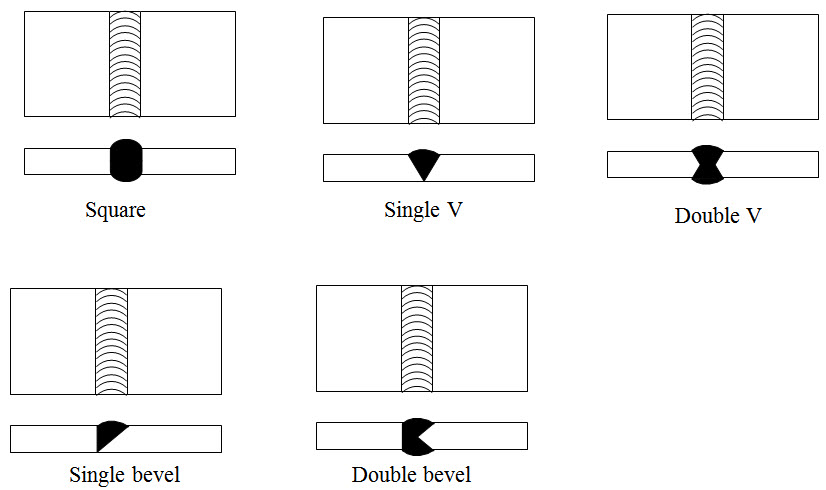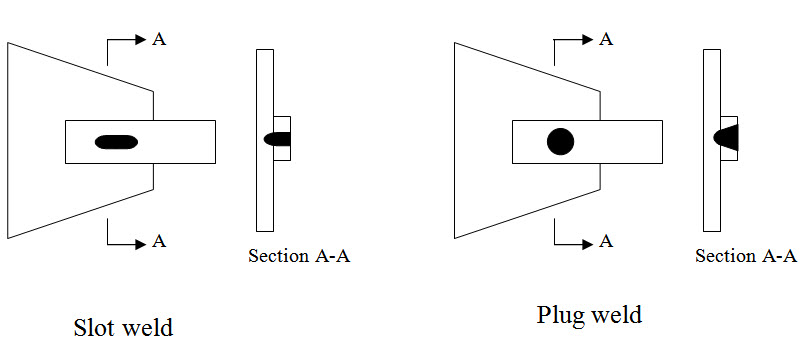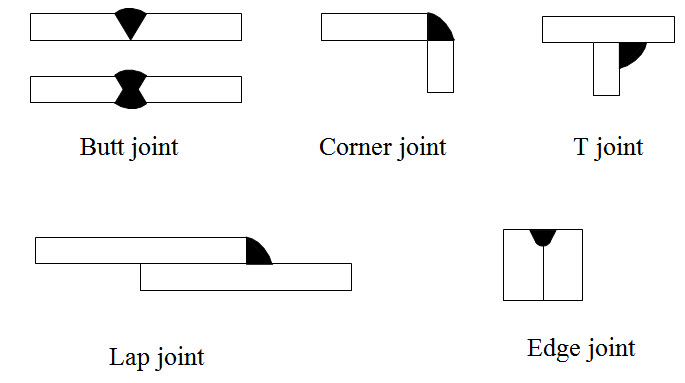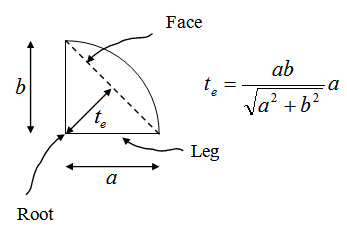Site pages
Current course
Participants
General
MODULE 1. Analysis of Statically Determinate Beams
MODULE 2. Analysis of Statically Indeterminate Beams
MODULE 3. Columns and Struts
MODULE 4. Riveted and Welded Connections
MODULE 5. Stability Analysis of Gravity Dams
Keywords
LESSON 27. Welded Joints: Basic Concept
In this lesson we will discuss different kinds of welded joints. Their design will be discussed in the next lesson.
27.1 Different Types of Welds
Welds may be broadly grouped into four types,
27.1.1 Groove welds
Groove welds are used to connect structural members that are aligned in the same plane and often used in butt joints. Various types of groove welds are depicted in Figure 27.1.

Fig. 27.1.
27.1.2 Fillet welds
Few examples of application of fillet welds are shown in Figure 27.2.

Fig. 27.2.
Fillets welds are mainly fail in shear.
27.1.3 Slot and Plug welds
There may be situations where fillet welds cannot be used due to unavailability of sufficient length. In such cases slot and plug welds are used. They are also occasionally used to fill up holes in connections. Few examples are shown in
Figure 27.3.

Fig. 27.3.
27.2 Types of Welded Joints
The types of welded joints depends on various factors such as size and shape of the member to be connected, area available for the joint, type of loading etc. The different types of welded joints commonly used are depicted in Figure 27.4.

Fig. 27.4.
27.3 Effective Area of Welds
The effective area of groove or fillet weld is determined as,
\[{{\rm{A}}_{{\rm{eff}}}}={t_e} \times {l_e}\]
where, te and le are the effective throat dimension and the effective length of the weld respectively.
Effective throat dimension (te) for different types of welds are given below.
27.3.1 Groove weld
\[{t_e}={5 \over 8}T\] [T is the thickness of the thinner member (Figure 27.5)

Fig. 27.5.
27.3.2 Fillet weld
The effective throat dimension of fillet weld is the shortest distance from the root of the face of the weld.

Fig. 27.6.
For slot and plug weld, the effective area is taken as the nominal area of the hole in the plane of the faying surface.
Suggested Readings
Subramanian, N. (2008). Design of Steel Structures. Oxford University Press.
Duggal, S.K. (2010). Limit State Design of Steel Structures. First Edition, Tata McGraw - Hill Education.